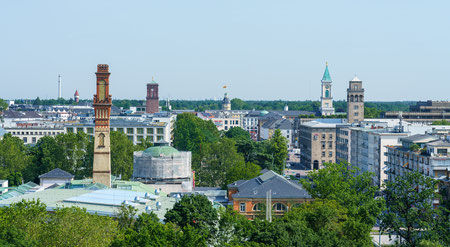GrüneLunge 1.0
Inter- and transdisciplinary approaches to develop strategies for increasing the resilience of trees in growing cities and urban regions
Urban trees and forests shape the cityscape and increase the quality of life for residents. Increasing the appreciation of trees and their benefits for humans and animals was just as much a part of the goals of the GrüneLunge 1.0 project as educating people about what trees can offer in urban areas (ecosystem services). They provide shade in summer and provide an additional cooling effect by evaporating water through their leaves (transpiration), thus mitigating heat stress in cities. They filter and bind air pollutants, produce oxygen and thus improve air quality. In the process, they sequester carbon, storing it for the long term and thus counteracting climate change. They regulate the water balance and improve the water quality of percolating rainwater, which is often the basis for drinking water production. They provide a habitat for a variety of life forms and accordingly promote biodiversity. They improve the appearance of cities through their colorfulness, and provide variety and space for recreation. But these diverse benefits in cities are under threat.
Progressing climate change and urbanization as well as new pests and diseases on trees endanger the inner-city and peri-urban tree population. The combination of the various stressors leads to trees first becoming weakened, then more susceptible, and in some cases even dying completely; and this affects not only individual trees but entire tree species and stands. This also threatens a loss of the services and benefits that urban trees and forests provide. One of the goals of the GrüneLunge 1.0 project was to start researching and developing solutions for countering these threats to trees in urban areas and preserving the diverse ecosystem services they provide.
In addition, transdisciplinary methods were applied in the KIT real laboratory "Quartier Zukunft - Labor Stadt": In a technical dialogue, the research results of all subprojects of GrüneLunge were discussed with the participating offices, institutions and technical representatives of Karlsruhe and Rheinstetten in order to create an optimized tree management system with a focus on climate adaptation. The social dialogue focused on how to succeed in raising society's awareness of the importance of a green city with a healthy plant population. With the campaign "Naturnah Gärtnern - Für Mensch, Tier & Klima" (Gardening close to nature - for people, animals and the climate), the city of Rheinstetten tried out how each and every individual can contribute to climate protection and biodiversity.
On the following pages you will find more information about the most important results of the project GrüneLunge 1.0.
.png)
